It’s the time of year for saving money!
There isn’t an audiophile print publication willing to say what I am about to say.
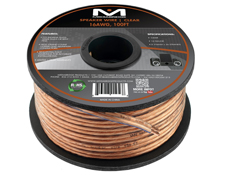 And that’s fine. They can chase the dragon the way that they always have, but I’m going to suggest a whole new way of looking at a controversial topic in the hobby: cables.
And that’s fine. They can chase the dragon the way that they always have, but I’m going to suggest a whole new way of looking at a controversial topic in the hobby: cables.
For years, with the sage advice of Noel Lee from Monster Cable, we have been told that good cables are essential to reaching the audiophile holy land and, on many levels, he was and is still today correct. His point back in the day was for AV dealers to learn to sell (his or even other brands) cables to make much more profit margin in any given audio-video transaction. That is a legacy that made many people in the audiophile and home theater business a lot of money over a long period of time.
Physically, having cables that are well shielded, are reasonably flexible, that pass every bit of the signal from any AV point A to point B, and also have rock-solid connectors at the ends help to make a more reliable installation. So, it’s sort of a win-win: consumers get a better system and dealers make more money. But as with so many things, audiophiles have taken this way too far. And there are a number of reasons for that.
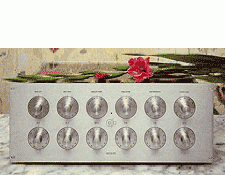 Far too many audiophile cables are designed to augment the sound of a system; in other words, they act as a filter or equalizer of sorts. As we head towards 2020, though, do you want to outfit your system with pricey cables that change the sound your system but without any meaningful way of controlling those sonic alterations? The alternatives include increasing the physical room treatments in your room and the growing number of rapidly improving room correction software systems, from Audyssey to Anthem Room Correction, to Dirac, to Trinnov, and so many others.
Far too many audiophile cables are designed to augment the sound of a system; in other words, they act as a filter or equalizer of sorts. As we head towards 2020, though, do you want to outfit your system with pricey cables that change the sound your system but without any meaningful way of controlling those sonic alterations? The alternatives include increasing the physical room treatments in your room and the growing number of rapidly improving room correction software systems, from Audyssey to Anthem Room Correction, to Dirac, to Trinnov, and so many others.
In the old days, the audiophile print people would poo-poo anything to do with using a graphic EQ.
I remember this vividly when selling Cello products like the Audio Palette back in the mid-1990s. The elders said that such EQs introduced phase shift into the signal and that you are better off going without the sort of sonic shaping that a product like the Audio Palette could deliver. That was and is even more so today an absurd claim.
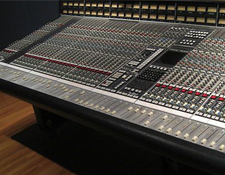 Think about any studio record that these people love, be it Electric Ladyland, Dark Side of The Moon, Aja, Brothers in Arms – you name it. Are these records recorded live without a mixing console as you might try with, say, a string quartet or a small jazz ensemble? Nope, they are recorded using upwards of 128 tracks, all of which have significant tone controls on them. Add to that the fact that nearly every recording studio monitoring system is EQ’ed, as is the mastering lab that the record is finished in.
Think about any studio record that these people love, be it Electric Ladyland, Dark Side of The Moon, Aja, Brothers in Arms – you name it. Are these records recorded live without a mixing console as you might try with, say, a string quartet or a small jazz ensemble? Nope, they are recorded using upwards of 128 tracks, all of which have significant tone controls on them. Add to that the fact that nearly every recording studio monitoring system is EQ’ed, as is the mastering lab that the record is finished in.
A Friend of the publication, Bob Hodas, has made his post-Village-People career on accurately tuning said world-class studios all over this fine planet so they output the best sound possible. Simply put: EQ has always been a meaningful part of the recording and mastering process, even if historically audiophile pundits crapped all over the idea of being able to allow you, the listener, to have room or program EQ.
The question I am asking isn’t about the relevance of EQ for the modern audiophile, though; the question I am asking is: should we use our cables for EQ versus the new, powerful tools that we have today?
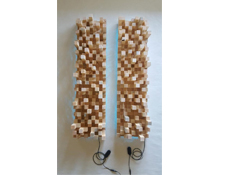 It is always a good idea to have your audiophile room well treated in the physical domain, meaning actual treatments on the walls, floors, and whatnot. It is singularly the best bang-for-the-buck upgrade you can invest in, and every engineer or AV executive who knows a thing or two will tell you such.
It is always a good idea to have your audiophile room well treated in the physical domain, meaning actual treatments on the walls, floors, and whatnot. It is singularly the best bang-for-the-buck upgrade you can invest in, and every engineer or AV executive who knows a thing or two will tell you such.
The magazines push the constant changing of gear, as that is good for the business. What’s good for your system, though, is getting your room acoustics right first and working on gear upgrades next as your budget allows while taking time to also enjoy the journey along the way.
But things have changed in meaningful way on the electronics side in the past few years. Dennis Burger writes about this extensively at HomeTheaterReview.com when he talks about room correction for AV Preamps and today’s best receivers.
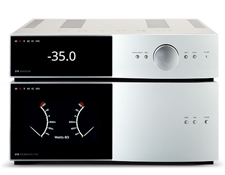 Ten years ago, room correction was a hot new feature that made for quite a buzz term, but often the automated results lacked life and vibrancy. But guess what? Room correction software from various developers has gotten really, really, good in just a few short years. Guess what else? Meaningful room correction solutions come in products ranging from a $500 AV receiver to a $750 ELAC integrated amp, to a $4,000 Anthem STR stereo preamp, to a state of the art Trinnov Amethyst DAC-Preamp costing upwards of $10,000. And this is only scratching the surface of audiophile products that will be coming with high performance room correction solutions that can digitally fix issues with your system.
Ten years ago, room correction was a hot new feature that made for quite a buzz term, but often the automated results lacked life and vibrancy. But guess what? Room correction software from various developers has gotten really, really, good in just a few short years. Guess what else? Meaningful room correction solutions come in products ranging from a $500 AV receiver to a $750 ELAC integrated amp, to a $4,000 Anthem STR stereo preamp, to a state of the art Trinnov Amethyst DAC-Preamp costing upwards of $10,000. And this is only scratching the surface of audiophile products that will be coming with high performance room correction solutions that can digitally fix issues with your system.
Is it better to solve these problems in the physical world with actual treatments? Absolutely, yes, it is. But given said tools to buff out any rough sounding issues in your room is a sea change for audiophiles looking to get the most performance from their system in their own room. Not enough lip service has been given to the importance of what digital room correction can do to help today’s audiophile – even one on somewhat of a budget.
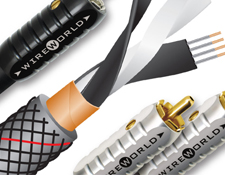 So, will audiophiles actually embrace digital room correction now? I think audiophiles who aren’t afraid of change and new technology will. The vast sums of money that can be sent on voodoo-based, colored sounding audiophile cables can be invested in more predictable and more performance-oriented audiophile product categories.
So, will audiophiles actually embrace digital room correction now? I think audiophiles who aren’t afraid of change and new technology will. The vast sums of money that can be sent on voodoo-based, colored sounding audiophile cables can be invested in more predictable and more performance-oriented audiophile product categories.
I want to also be clear that by no means am I advocating that audiophiles should switch out their cables for thin zip cord or any other flimsy, poorly made cable. But please remember – physics are physics. A cable with a good amount of copper (or silver, or…) in it can typically pass signal very effectively. A cable that is fantastically shielded can effectively keep external noise out of your system. A cable with really well-made connectors at the ends can make really solid analog connections and last for generations of use. These are all very good outcomes that any audiophile wants for his system.
I am asking the question: do you need to have said cable inject a “sound” into your system anymore? 25 years ago, I would have said that you did. Back then, these cables simply sounded better with the equipment of the times and God knows, I sold my fair share of $3,000 speaker cables. Today, I am fonder of cable from the likes of Wireworld (and a few others) who focus their design fully on making cables that don’t sound like cables.
How do you look at cables in your audiophile system? What do you look for cables to do for you in the modern day and how has that changed over time? We want to hear from you in the comments below. Post away…
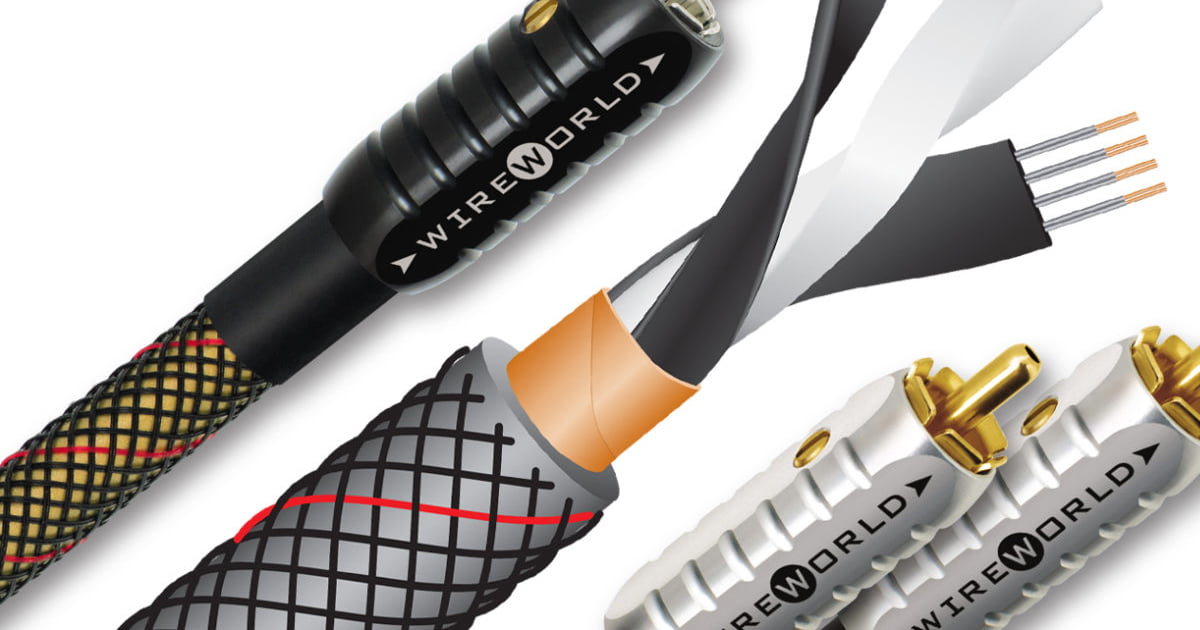








Excellent topic BTW and well written. So Yes and No. For some a neutral cable is what is in order for their system. Then others with may want to flavor the sound. Not everyone can have a dedicated room or stellar neutral gear. That is why IMHO there are so many cables available.
To date as a dealer I have yet to meet a DSP device that does not color tonality or affect harmonic structure. However that is my opinion. I want a cable to be fast, accurate, uncolored and priced fairly.
I guess we all really know that what we hear in our lounge room is not real, we sit and talk about soundstage when in many recordings the soundstage is a construct often the musicians and vocalist are not in the same room? Thus are we not looking for a sound that we like rather than one which is, actually, neutral or accurate. I listen to horn speakers and they all sound completely false, a friend loves them. I have had hybrid amp / pre amp in music room and a Naim solid state in the lounge, both sound great, but completely different.
A reproduction is correct. However some systems can mimic live others can not. A violin in our system sounds like a violin in real space. A full orchestra ? close but no cigar. The illusion must be convincing, that is all we can ask for.
First, well written and thought out article, Jerry.
Then, what Charles said. The wife will not allow sound treatment in my combo “listening room” – bedroom so I make do with some room correction but I would love to find a better option than what I presently have, which is just the room correction with my sub. Any thoughts would be appreciated.
Ask the wife if she wants to be happy…then tell her that sound treatments for her husband will trickle down to her happiness.
Fabric walls?
Bass traps built into the stud bay covered by fabric.
Something on the ceiling for the first order reflections in front of the speakers?
Plants or book cases for diffusion?
Working with an interior designer to get what you need in a way that she won’t freak?
Some systems can mimic live? Personally I ‘ve never heard one get remotely close, at any price secondly how many albums are live, very few. Of course if classical is your scene its a little different but still we are listening to an illusion, I for one expect a much better than live resolution of my system with a studio recording.
Michael. Sorry to hear that. Plenty of great Live LPs and CDs available. Come on over to my place for a listen. As I stated “mimics” live. Timbre, tonality and harmonic structure is good enough for me. If you said a drum kit I would agree 100%.
There’s a good clip on youtube from zero fidelity regarding this, I tend to agree with him. It’s theme is “which sort of fake to you prefer”. I believe you just cannot squeeze an orchestra or rock band into a lounge room, it’s a different experience and its great but its not live music.
Isn’t that like saying my car is just like a V8 just with 4 less cylinders?
Has anybody made graphs of frequency response and other related parameters of various audiophile cables? Given the premise of this article, it might be interesting to see exactly what these cables are doing.
You can take any cable you like and connect it to test equipment. Assuming it’s a good or even high quality cable with good connectors, you won’t see a dime’s worth of difference between one cable and another. That’s why it’s my opinion that most, if not all, of these “audiophile” cables are hooey.
BTW, high end speaker cables can affect, in minute ways, the sound, but one cable works with one amplifier/speaker combination differently from another amp/speaker combination.
Jerry, thanks for this. (1) Cables: For years, I have had mine made by a pro audio shop: Mogami W2549 + Neutrik XLRs; $110 for a 25-ft pair. Friends who are musicians have confirmed, they are more neutral than expensive cables I’ve tried. (2) DSP for tone control: I had a Cello Palette Preamp previously, and now I have the Anthem preamp pictured above. Those who think DSP is not needed if you have the right cables or system synergy are missing an important point. For a music lover with a big library, variation in tonal balance among recordings makes tone controls a necessity, especially for classical music. This cannot be done with cables! Fortunately, DSP has become quite transparent now. (3) DSP for rooms: In many domestic rooms, it’s impossible to get even bass response without DSP. Once you have heard extended bass response without boom or overhang, it’s hard to give it up.
I LOVED the old Cello Palette products but fully understand why you upgraded to the Anthem.
I just bought their 8 channel distribution amp with ARC in it but I don’t have the ARC working yet with my invisible speakers all over my new house. Respectfully, I don’t have much working right here yet but we are SLOWLY making progress.
Yes, we are making progress. If I could have the EQ quality of the Anthem and ARC with some of the interface flexibility of my old TacT 2.2X, I think I’d be in audiophile nirvana. (Or maybe that’s what Trinnov would give me, at considerable expense).
Cables that modify the sound in any way can only be considered defective.
Yes, absolutely.
Cables all modify the sound. Engineers modify the sound, speakers modify the sound, music artists play with modifying sounds, The best we can hope for is to listen and determine if the results match our intent.
There are certain links in the chain that should not modify the sound – cables are one of them. Ideally electronics such as amps and preamps shouldn’t modify the sound either…ideally. Speakers do modify the sound, and we purchase the ones whose modifications we find pleasing. Engineers and artists modify the sounds that they are recording, the job of the rest of the reproductive chain is to play these sounds back without further modification.
It’s an old-school mindset built around inferior equalizers, tone controls, loudness buttons, and overcoming degradations due to tape dubbing. With my modern system I want my wires (is this EQ’ing wires really a thing???) and devices to be neutral and not attempt to EQ the sound at all because my DSP is MUCH better at tuning for the room. I can always boost around certain nulls if I want to, or get the appropriate room treatment.
You should have heard the BS that I used to get from the audiophile elders back in the 1990s selling mastering studio quality EQs like the Cello Audio Palette. They would say that EQ injects phase shift when EVERY record they listen to has EQ on the house speakers, ever one of the tracks, at the mastering lab.
I suspect the phase shift is coming from them talking too loudly due to their noise induced hearing loss and tinnitus.
Every cable company will tell you their goal is to disappear or in other words be neutral. All products within a system have a sound including all modern DSP devices. Cables are a necessary and important component as there is so much signal transfer over length where they must be employed. The proper mixture of components, cables, signal processing, and room treatment at the hands of a master is amazing. Now that I work with Vandersteen and find myself outside of the cable world, I always smile when reviewers and customers say to Richard Vandersteen how his rooms always sound great. The reason for the smile is Richard has used powered bass and ASP (analog signal processing) in the 100 hertz and below region for over 25 years now. He has kept the cable selection within his show systems fairly narrow and predictable so he knows what to expect going into a space. Like anything, if you put just enough into the mix the results are spectacular and too much, the sound becomes very unnatural very quickly. There is no quick fix to yield natural and concert like sound and experiences. I am rambling which shows that yet again Jerry has me thinking.
I started thinking one time but my head caught on fire.
As they say in the Northeast…yup.
The is no replacement for getting the most of your system before room correction ! If it is not there your can not create it . The ear processes sound in 120 Nano seconds , most processing in significantly slower . Therefore getting it physically setup right is most important! PS I sold many Palette. Paul Jayson at Viola Labs has a modern Palette in the works as we speak.
I agree.
Fix your room as best you can in the physical domain first. That always has a limit in terms of your room, your budget etc… But doing that first is much better than leaning ALL on DSP.
I hope Paul calls me when he’s got a working unit.
What about the sonic value of speakers connected wireless by BlueTooth? Anyone ever had Bluetooth fail to make a connection as I have??
Strange enough that I just started using room correction 3 days ago. ARC to be specific. I have been into audio since I was 18 yrs old and in my 40s now. I’ve owned a lot of speakers, amps/integrated amp and receivers and I must say that ARC has made the most impact in my system since I have been an audiophile. My old receivers had calibration software but ARC is on another level. I should have done it sooner.
You are doing to DIG ARC my friend.
During my time at ATI/Theta Digital we made a huge effort to eliminate unintended equalization from the audio chain. For example, Theta’s original amps had “zero negative feedback” plus the resulting high output impedance. Interaction between the amplifier and the speaker caused significant peaks and dips in the audible frequency response. As one of my customers put it, one could love those amps with their system and another could loathe them–and they could both be correct. Changing Theta’s amps to Hypex N-Core modules solved that issue. The amps offered the same frequency response independent of their load.
Cables have inductance, capacitance and resistance and react with speakers in predictable ways based on the L, C and R of the speaker system. Cables that change the sound are simply wrong. If that’s what your now using, you owe it to yourself to make a different choice. And that goes double for amps with high output impedance.
For the record, Jeff was the FIRST PERSON to hip me to the concept of Trinnov and it was more than i could understand. I am glad I do now. Killer stuff and industry changing as far as I am concerned.
I have tinkered with audio equipment since I was in middle-school. In the 70’s, I bought Sherwood products when they were, I thought, really great and now own an Onkyo surround system. I use my old Sherwood equipment to power speakers all over the house. I am now almost 75 y/o and as far as I can tell, wire is wire. All that hi-end wire stuff is a waste of money. While likely not recommended, even phone wire works.
Let’s not get too crazy.
A good gauge copper wire with excellent shielding and very well made, well-installed connectors goes a long way in a good audio system.
With that said, today’s room correction makes $30,000 pairs of speaker cables a little silly.
I cannot believe that we still have conversations about audio cables. Just get yourself a set of Belden’s 5000 10AWG at about $1.25/feet and it will match or surpass any other cable around costing a fortune.
I have those white 10AWG cables from BlueJeans Cable, it’s great quality and affordable.
For me DSP still has a way to go. I hear a house sound from all DSP devices heard. For bass reproduction though a winner from what I have heard. Yes some recordings require EQ adjustment. Not all are well executed. So putting some lipstick on it [ EQ ] it is still a Pig. Play something else.
Make sure that you’ve heard the latest from the likes of Diriac, Anthem ARC, Trinnov and the other good ones.
They’ve made AMAZING improvements even just in the last few years.
Thanks Jerry.